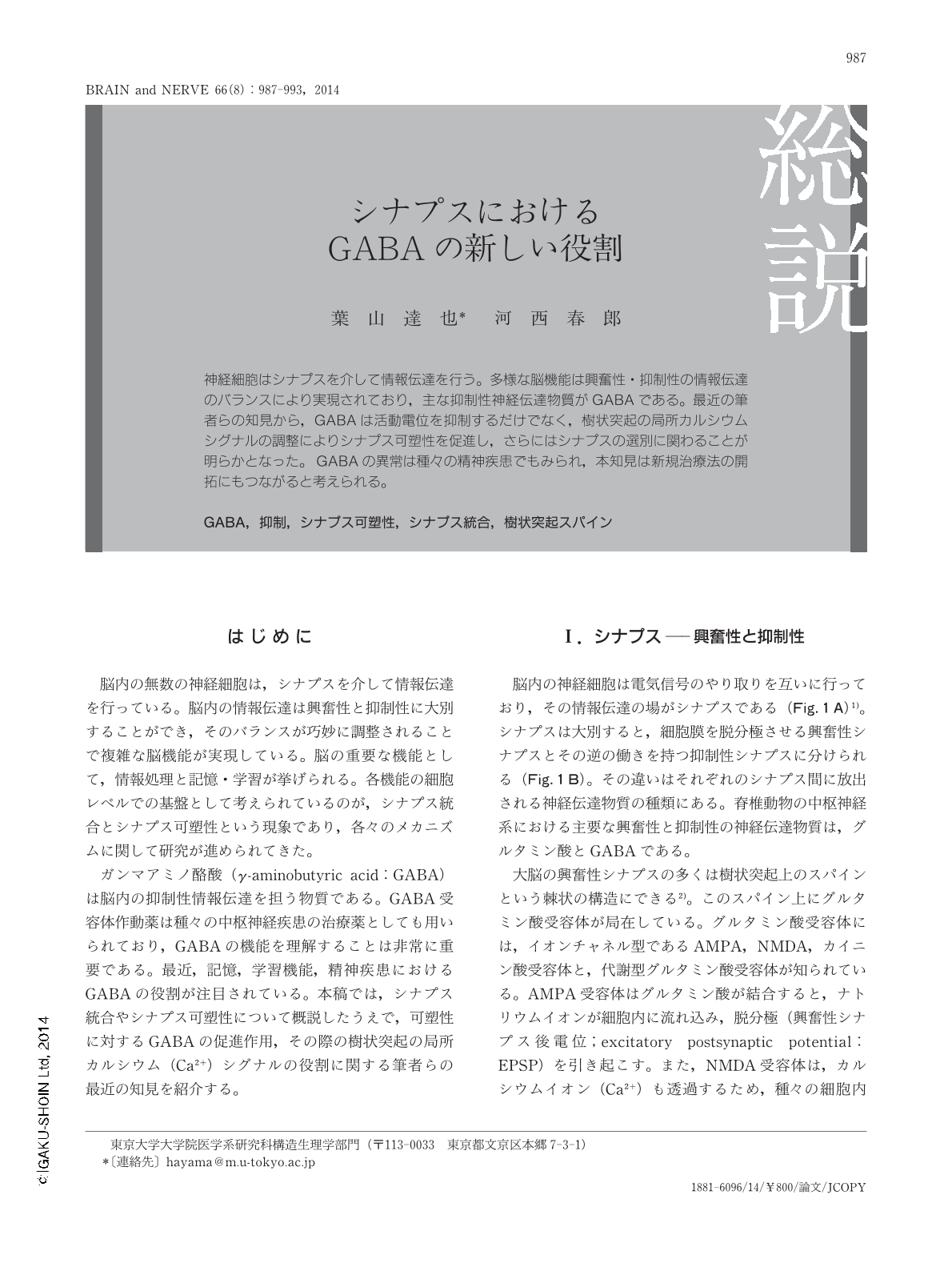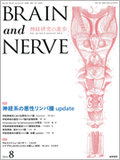Japanese
English
- 有料閲覧
- Abstract 文献概要
- 1ページ目 Look Inside
- 参考文献 Reference
神経細胞はシナプスを介して情報伝達を行う。多様な脳機能は興奮性・抑制性の情報伝達のバランスにより実現されており,主な抑制性神経伝達物質がGABAである。最近の筆者らの知見から,GABAは活動電位を抑制するだけでなく,樹状突起の局所カルシウムシグナルの調整によりシナプス可塑性を促進し,さらにはシナプスの選別に関わることが明らかとなった。GABAの異常は種々の精神疾患でもみられ,本知見は新規治療法の開拓にもつながると考えられる。
Abstract
Neurons connect and transmit information via synapses. The major excitatory and inhibitory (E-I) neurotransmitters are glutamate and γ-amino butyric acid (GABA), respectively. The E-I balance plays an important role in various brain functions. In this review, we summarize the role of GABA on synaptic integration and synaptic plasticity by introducing our own recent findings. In synaptic integration, GABA is considered to inhibit depolarization induced by glutamate and suppress action potentials. We found that GABA also has a more direct role on the synaptic plasticity of excitatory inputs. GABA effectively promotes the shrinkage and elimination of synapses by suppressing local dendritic Ca2+ signaling, while keeping the Ca2+ domain of the NMDA receptors intact. In this manner, GABA promoted the activation of calcineurin, which in turn activated cofilin. Interestingly, shrinkage tended to spread, likely due to the spread of cofilin, and induced competitive selection of synapses via its phosphorylation and dephosphorylation. The selection of synapses is key to the reorganization of the central nervous system during development and in adulthood, and GABA plays key roles in various mental disorders, such as autism and schizophrenia. Our results account well for the in vivo GABA functions on synaptic selection, and may help to develop new therapeutic compounds.

Copyright © 2014, Igaku-Shoin Ltd. All rights reserved.


